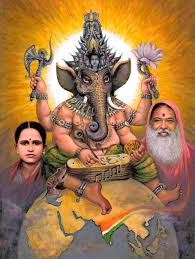On Ekadashi day, sins reside not just in rice grains, but in all food grains! If you wish to follow Ekadashi Vrata strictly, you should not eat anything. You must not even drink even a sip of water. This is the right procedure.
The only excuse from this vrata is for those who have illness. When the body does not cooperate, you have to give up on the Vrata. You can only chant the name of God. It is important to protect our life. Instead, sick people can consume minimal food. The intake must be limited. Cooked food should be avoided. There are fruits and other grains that can be consumed in quantities just enough for sustenance.
There is nothing wrong in using rice grains for worship on Ekadashi day as the grains become sanctified when mixed with ghee, Kumkum and Turmeric.
Overall, irrespective of whether it is Ekadashi or not, for health benefit it is better to consume millets in lieu of rice all through the year. Millets grants good health. Those who consume polished rice are bound to be tormented by ailments. Millets are very good for kidneys. Consuming small quantities of millet is sufficient, it fills the stomach. They are more expensive than rice, but they are healthier.
Now coming to your question as to why food is served in Annapurna Mandira on Ekadashi day, then understand that it is for those who cannot fast i.e. those who have ailments. It is to protect their prana/life.
It is your Dharma to observe Ekadashi vrata and fast on that day. You don’t have to go running to Annapurna Mandira the moment the bell rings! You are not able to bear hunger pangs which is why food is being provided. Not being able to bear hunger is also a form of disease.
(Q&A Session 7 May 2017)
